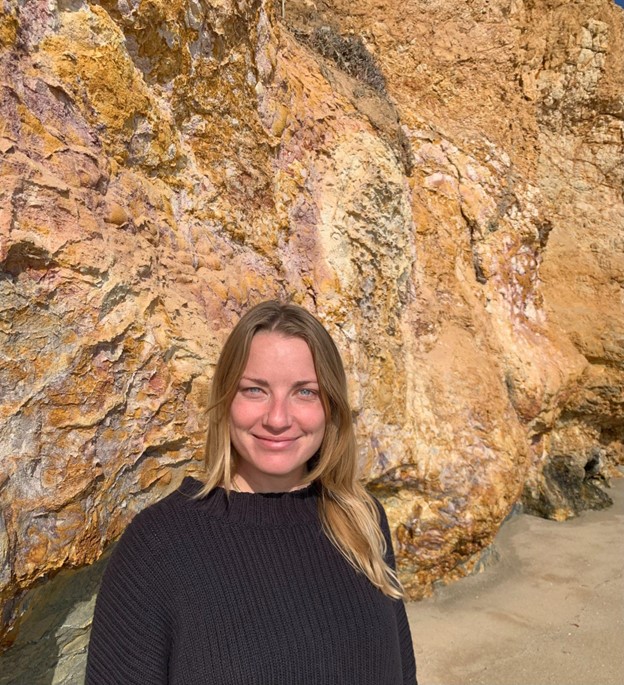CW3E Publication Notice
An Overview of Drifting-Buoy Deployments in Atmospheric River Reconnaissance from 2019 to 2024
July 2, 2025
A new research article “An overview of drifting-buoy deployments in atmospheric river reconnaissance from 2019 to 2024” by international researchers David Lavers and Bruce Ingleby from the European Centre for Medium-Range Weather Forecasts (ECMWF), Luca Centurioni from the Lagrangian Drifter Laboratory at Scripps Institution of Oceanography, and Anna Wilson and F. Martin Ralph from CW3E, was published recently in the Quarterly Journal of the Royal Meteorological Society.
The Atmospheric River Reconnaissance (AR Recon) program was developed to increase the accuracy of Numerical Weather Prediction (NWP) forecasts of atmospheric structures, with a specific focus on landfalling atmospheric rivers (ARs) and their impacts. Accurate NWP forecasts rely on a network of atmospheric and oceanic data observations, including sea-level pressure, collected by drifting buoys outfitted with barometers.
During a meeting in 2018 at ECMWF, the importance of sea-level pressure observations gathered via buoys was discussed. The data gap in the North Pacific Ocean motivated a partnership between CW3E and the Lagrangian Drifter Laboratory (LDL) to increase the amount of barometer-outfitted buoys in the LDL’s Global Drifter Program (GDP) array, and deploy them to areas with sparse data coverage. This article (1) documents how this partnership has enabled an increase in barometric drifting buoys across the North Pacific Ocean and (2) assesses how the resulting data have impacted the ECMWF Integrated Forecasting System (IFS).
Currently, the GDP consists of approximately 1250 Lagrarian drifter buoys tracked on the sea surface by satellite. Through the AR Recon program, a subset of these buoys were upgraded with barometers to relay sea-surface temperature and sea-level pressure observations to shore, every hour, to be assimilated into NWP systems. Between 2019 and 2024, AR Recon deployed 309 specialized buoys using two platforms: U.S. Air Force C-130 aircraft from the 53rd Weather Reconnaissance Squadron and ships of opportunity (Table 1). Deployment sites were chosen strategically to fill observation gaps, especially in the North Pacific storm track region. Notably, during the 2024 AR Recon season, flights departed from Guam for the first time, allowing for a valuable increase of coverage over the western North Pacific. The study found that upgrading drifting buoys with barometers significantly enhanced surface pressure coverage over the North Pacific by expanding from just 106 reporting buoys in 2019, to 260 in 2024.
|
Season
|
2019
|
2020
|
2021
|
2022
|
2023
|
2024
|
|
32[0]
|
64[16]
|
30[10]
|
50[10]
|
56[10]
|
86[20]
|
Table 1. (from Lavers et al. (2025)). The number of buoys released in each Atmospheric River Reconnaissance season. DWSB buoy numbers are included in the total and referenced separately in brackets.
To assess the value of buoy observations in the ECMWF IFS system, this study uses Forecast Sensitivity to Observation Impact (FSOI), which estimates how individual observations affect 24-hour forecast error. FSOI and observation-minus-background (O−B) values were analyzed for buoys in the North Pacific and North Atlantic from 2019 to 2024.
Figure 1. (Fig. 6 from Lavers et al. (2025)): (a) Scatterplots of the average forecast sensitivity observation impact (FSOI) against the standard deviation of the observation-minus-background (O − B) departures at each buoy in the North Pacific and North Atlantic and from Atmospheric River Reconnaissance (AR Recon) calculated over 1 January to 31 March 2024. The number of drifting buoys and the Spearman rank correlations between the average FSOI and the standard deviation of the O − B departures are given in the legend; the North Pacific number includes AR Recon buoys. (b) The Gaussian-estimated density function of the average FSOI for drifting buoys in the North Pacific and North Atlantic and from AR Recon; the average values are given in the legend. (c) The Gaussian-estimated density function of the standard deviation of the O − B departures for drifting buoys in the North Pacific and North Atlantic and from AR Recon; the average values are given in the legend.
Analyses using FSOI found that, on average, the sea-level pressure observations from drifting buoys reduced 24-hour forecast errors, highlighting the value of a more complete buoy network for NWP overall (Fig. 1). The additional observations help to anchor the model, providing a more accurate picture of upstream sea-level pressure patterns and associated atmospheric river events.
This study reinforces past research demonstrating the positive impact of AR Recon drifting buoy observations on forecast skill (Reynolds et al. 2023) and the positive impact of buoys with sea-level pressure observations more generally (Horányi et al. 2017; Centurioni et al. 2017a; Ingleby and Isakson 2018, among others). The results in this study clearly demonstrate the value of sustained and expanded monitoring in data-sparse but meteorologically important regions. These findings underscore the importance of continued investment in targeted observation strategies to reduce forecast uncertainty, especially for atmospheric river events that drive high-impact weather along the North American West Coast. In particular, this study provides a strong case to begin targeting rapidly developing systems and ARs with buoys, particularly systems that are forecast to be extreme.
Centurioni, L., Horányi, A., Cardinali, C., Charpentier, E., & Lumpkin, R. (2017). A Global Ocean Observing System for Measuring Sea Level Atmospheric Pressure: Effects and Impacts on Numerical Weather Prediction. Bulletin of the American Meteorological Society, 98(2). https://doi.org/10.1175/BAMS-D-15-00080.1
Ingleby, B., & Isaksen, L. (2018). Drifting buoy pressures: Impact on NWP. Atmospheric Science Letters, 19(6), e822. https://doi.org/10.1002/asl.822
Horányi, A., Cardinali, C., & Centurioni, L. (2017). The global numerical weather prediction impact of mean-sea-level pressure observations from drifting buoys. Quarterly Journal of the Royal Meteorological Society, 143(703). https://doi.org/10.1002/qj.2981
Lavers, D.A., Centurioni, L., Wilson, A.M., Ingleby, B. & Ralph, F.M. (2025). An overview of drifting-buoy deployments in atmospheric river reconnaissance from 2019 to 2024. Quarterly Journal of the Royal Meteorological Society, e5049. https://doi.org/10.1002/qj.5049
Reynolds, C.A., Stone, R.E., Doyle, J.D., Baker, N.L., Wilson, A.M., Ralph, F.M., Lavers, D.A., Subramanian, A.C., & Centurioni, L. (2023). Impacts of Northeastern Pacific Buoy Surface Pressure Observations. Monthly Weather Review, 151(1). https://doi.org/10.1175/MWR-D-22-0124.1











